
Medical Disclaimer: The information in this blog, including content about diastasis recti exercises, is for educational and informational purposes only and is not intended as medical advice. The content in this post is not meant to substitute for a professional medical diagnosis, advice, or treatment. Always consult your physician or another qualified healthcare provider with any questions you may have regarding a medical condition or before starting any new exercise program.
Is that stubborn belly bulge making you feel stuck? You might be dealing with diastasis recti – a condition where your abdominal muscles separate, often due to pregnancy, weight changes, or surgery. The good news? Diastasis recti exercises can help strengthen your core, close the gap, and restore your midsection.
But don’t panic! You can totally tackle this! With the right exercises, you’ll not only decrease that gap but also sculpt your core like never before.
What Is Diastasis Recti?
Diastasis Recti occurs when the rectus abdominis muscles, the muscles in the front of the abdomen, separate, usually from pressure caused by pregnancy, obesity, or weight changes. This creates a gap that can be seen or felt along the midline of the stomach.
Symptoms [1]
- A bulge in the middle of the abdomen, especially noticeable when you engage your muscles (like during a sit-up or leg raise).
- It can sometimes cause pain or discomfort in the abdominal area.
Why Exercises Are Important
Exercises help strengthen the core muscles, including the pelvic floor muscles, and support the healing of Diastasis Recti. By targeting deep abdominal muscles, exercises can help close the gap in abdominal separation, improve posture, and reduce symptoms like back pain. This helps to heal diastasis recti and prevent it from worsening.
7 Simple Diastasis Recti Exercises
1. Wall Sits
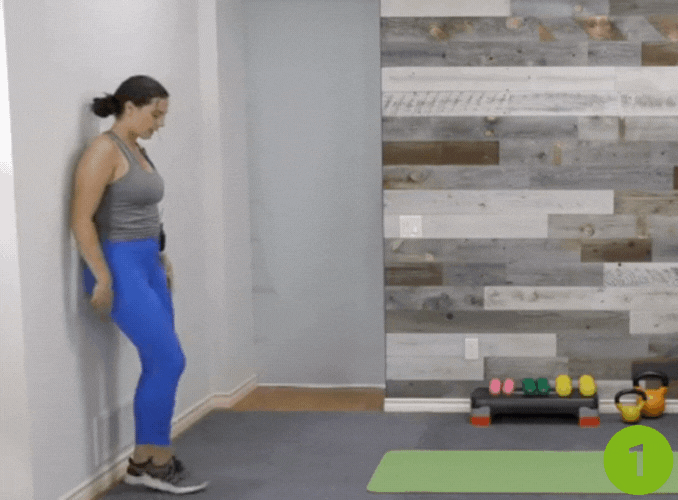
- Begin in an upright standing position with your back against the wall, with your feet hip-width apart, maintaining good alignment with your head, shoulders, hips, and legs.
- Place your hands at your side and press your back firmly against the wall.
- Engage your core muscles.
- Bend your knees at a 90-degree angle to lower your body.
- Hold the position for a couple of seconds.
- Raise back up and repeat the movement with 5 repetitions.
2. Seated Breaths
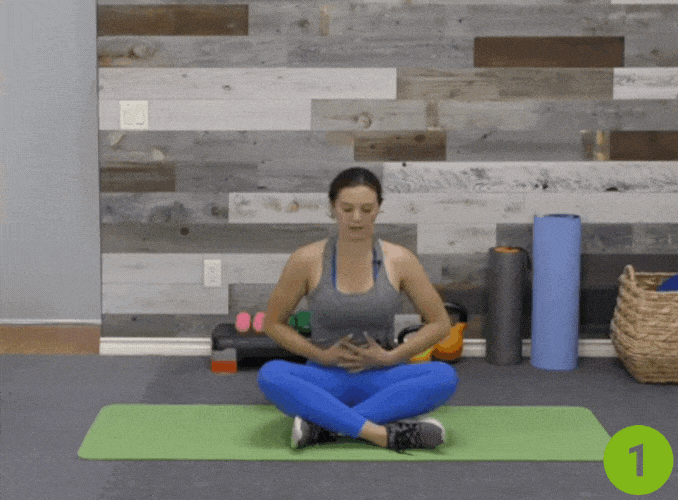
- Begin in an upright seated position with your legs crossed, maintaining good alignment with your head, shoulders, and hips.
- Place your hands on your belly.
- Tighten your abdominal muscles.
- Inhale as you press your hands on your belly, then exhale while still keeping your spine neutral.
- Hold the position for several deep belly breaths, in through your nose and out through your mouth.
3 Single Leg Lift

- Begin in an upright standing position with your feet hip-width apart, maintaining good alignment with your head, shoulders, hips, and legs.
- Place your hands on your belly.
- Engage your core muscles.
- Lift your left leg sideways, placing all your weight into your right leg as you straighten your back to pull your belly towards your spine.
- Hold the position for a couple of seconds.
- Lower your foot to return to the starting position and repeat the movement on the opposite side.
4. Heel Slide
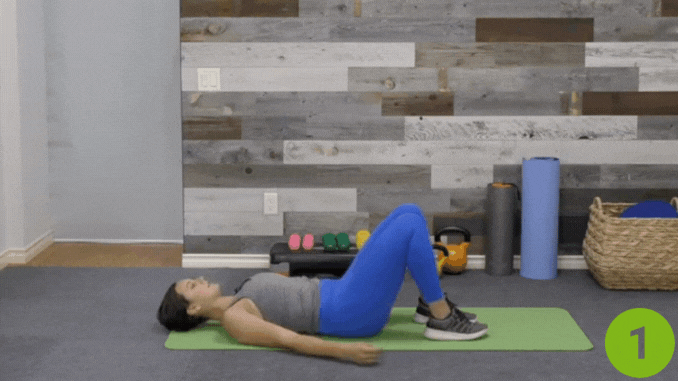
- Lay on the floor with your knees bent and feet flat on the floor, maintain good alignment with your head, shoulders, hips, and legs.
- Place your hands on your belly or at your side.
- Tighten your abdominal muscles.
- Slowly slide to extend one leg forward and hover a few inches off the floor, then raise your opposite arm overhead.
- Hold the position for several deep belly breaths, in through your nose and out through your mouth.
- Relax and return to the starting position.
- Repeat the movement on the opposite side.
5. Bridge Pose

- Lie on your back on the floor with your knees bent and your feet flat on the floor, relaxing your upper body.
- Place your arms at your side.
- Contract your abdominal area, then push from your heels to lift your hips.
- Maintain good alignment with your head, shoulders, hips, and knees.
- Hold this position for several deep belly breaths, in through your nose and out through your mouth.
- Relax and return to the starting position. Repeat the movement with 5 repetitions.
6. Toes Taps
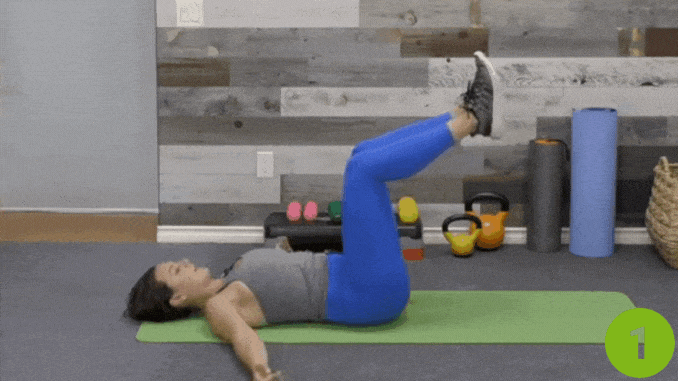
- Lie on your back on the floor with your knees bent and feet flat on the floor, maintaining good alignment with your upper body.
- Place your hands on your side at shoulder level.
- Tighten your abdominal muscles.
- Lift both feet off the floor keeping your knees bent at a 90-degree angle.
- Then, lower your left foot to the floor while keeping your right foot up.
- Hold the position for a couple of seconds.
- Repeat the movement on the opposite side.
- Repeat the sequence of movements for 10 repetitions.
7. Candle Blows

- Begin in an upright seated position with your legs crossed, maintaining good alignment with your head, shoulders, and hips.
- Place your hands on your belly and imagine a birthday cake full of candles in front of you.
- Breathe in and, on the exhale, blow or hiss all the air out as if you were going to blow out all the candles.
- Keep the blowing/hissing slow and steady — as if you were going to blow out the candles with one long sweeping push of air.
- Don’t lean forward, but keep your back straight.
- Exhale until all the air is gone, then relax and repeat the movement.
Other Easy Exercises To Try For Diastasis Recti
1. Pelvic Tilts
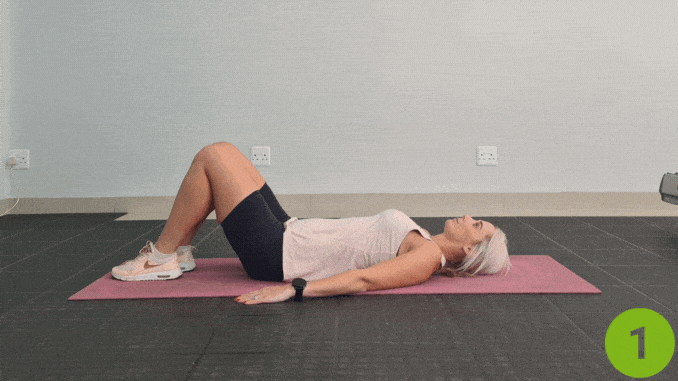
- Lie on your back on the floor with your knees bent and feet flat on the floor.
- Maintain good alignment with your head, shoulders, and hips.
- Place your hands on your side.
- Slowly roll your pelvis backward as if you were flattening out your spine.
- Hold this position for several deep belly breaths, in through your nose and out through your mouth.
- Slowly return to the starting position. Repeat the movement with 10 repetitions.
This exercise is also recommended by Dr. Anukriti Pant, who advises keeping the belly pulled in at all times, rather than performing movements that push it out.
2. Plank
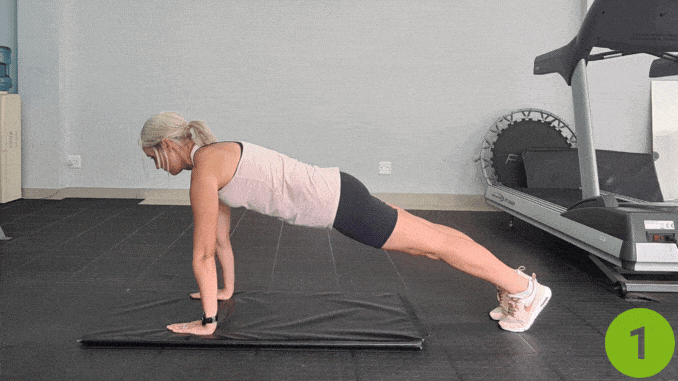
- Begin in a 4-point position, with your knees below your hips and your hands beneath your shoulders.
- Move into a straight-arm plank position, maintaining good alignment with your head, shoulder, hips, and toes.
- Take several deep belly breaths, in through your nose and out through your mouth.
3. Knee Lifts
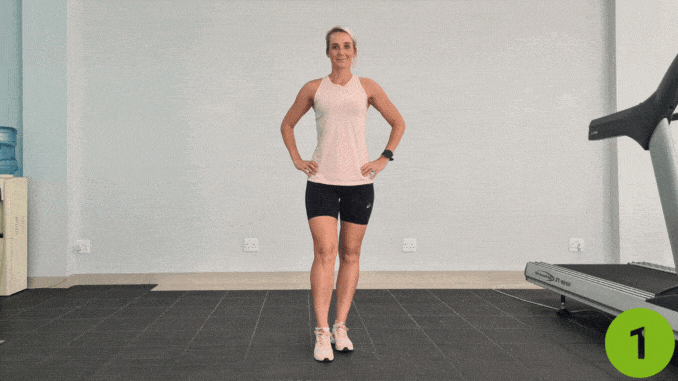
- Begin in an upright standing position with your feet hip-width apart, maintaining good alignment with your head, shoulders, hips, and legs.
- Place your hands on your hips.
- Engage your core muscles.
- Lift one knee up, placing all your weight on one leg.
- Hold the position for a couple of seconds.
- Lower your foot down and repeat the movement on the opposite leg.
4. Cat-Cow Stretch
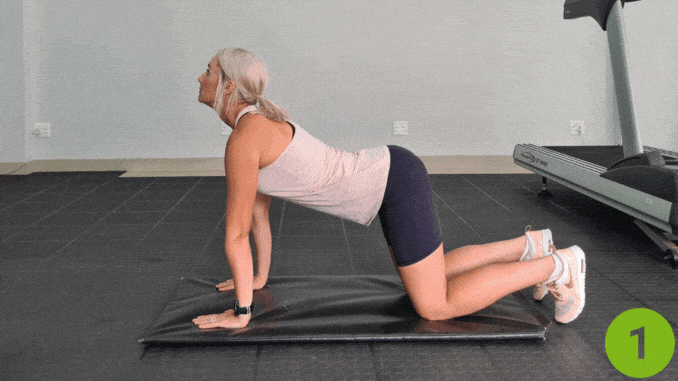
- Begin in a 4-point position with your hands beneath your shoulders and your knees under your hips. Engage your core.
- Arch your mid-back as you lift your head upward.
- Then, tuck your tailbone in and round your spine as you lower your head downward.
- Repeat the sequence of movement with 3 repetitions.
5. Core Activation Breathing
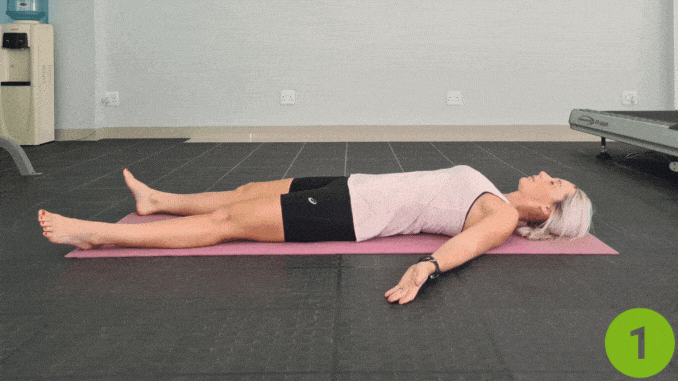
- Lie on your back on the floor with your legs extended and feet wider than shoulder-width apart.
- Spread your arms at your side.
- Inhale as you pull your belly button towards your spine, then exhale, relaxing your upper body.
- Hold the position for several deep belly breaths, in through your nose and out through your mouth.
Who’s Most At Risk?
- Women after pregnancy [3], especially those who have had multiple pregnancies.
- High BMI individuals or those who’ve had previous abdominal surgery.
What Causes Diastasis Recti?
Diastasis Recti [2] occurs when excessive pressure causes the abdominal muscles, including the rectus abdominis muscles, to separate. Common causes include:
- Pregnancy: The growing uterus puts pressure on the muscles, especially in women with multiple pregnancies. The research concluded that giving birth multiple times and having repeated abdominal surgeries increase the chances of developing Diastasis Recti Abdominis (DRA). (2)
- Obesity: Extra weight increases pressure on the abdomen.
- Rapid Weight Changes: Quick weight gain or loss can strain the muscles.
- Improper Exercise: Exercises like crunches or heavy lifting can put undue pressure on the abdomen.
- Genetics: Some may be more prone due to body type or family history.
- Age: Muscles lose elasticity with age, making them more likely to separate.
Diet Tips For Diastasis Recti Recovery
A balanced diet can support muscle healing and reduce inflammation. Here’s what to focus on:
- Protein (chicken, fish, eggs): Helps rebuild muscles.
- Anti-Inflammatory Foods (salmon, flaxseeds, veggies): Reduce inflammation.
- Collagen (bone broth, chicken skin): Helps repair tissues.
- Fiber (whole grains, fruits): Aid digestion and support weight management.
- Hydration: Drink plenty of water for healing.
- Avoid Bloating Foods (carbonated drinks, beans): Reduce pressure on the abdomen.
When To See A Doctor
If you experience severe pain, difficulty breathing, or trouble moving, consult a healthcare provider. They can offer guidance and help with more serious cases.
Conclusion
Diastasis Recti exercises require consistency for improvement. Consistency is key to improving Diastasis Recti. Regular exercises, along with a nutritious diet, can help close the gap and improve core strength. If you’re not seeing improvement, a physical therapist can provide personalized exercises that also focus on strengthening both the abdominal wall and pelvic floor muscles.
If you want to strengthen your core and back, flatten your belly and achieve your dream abs while keeping yourself injury free, then check out the

